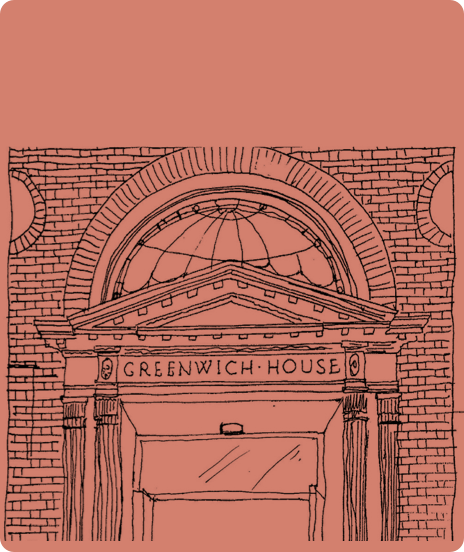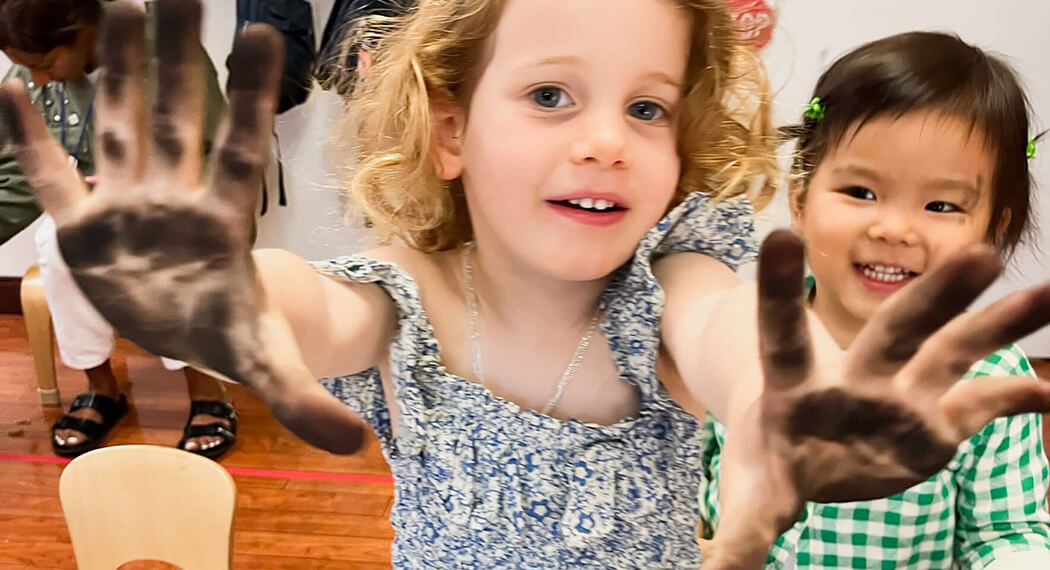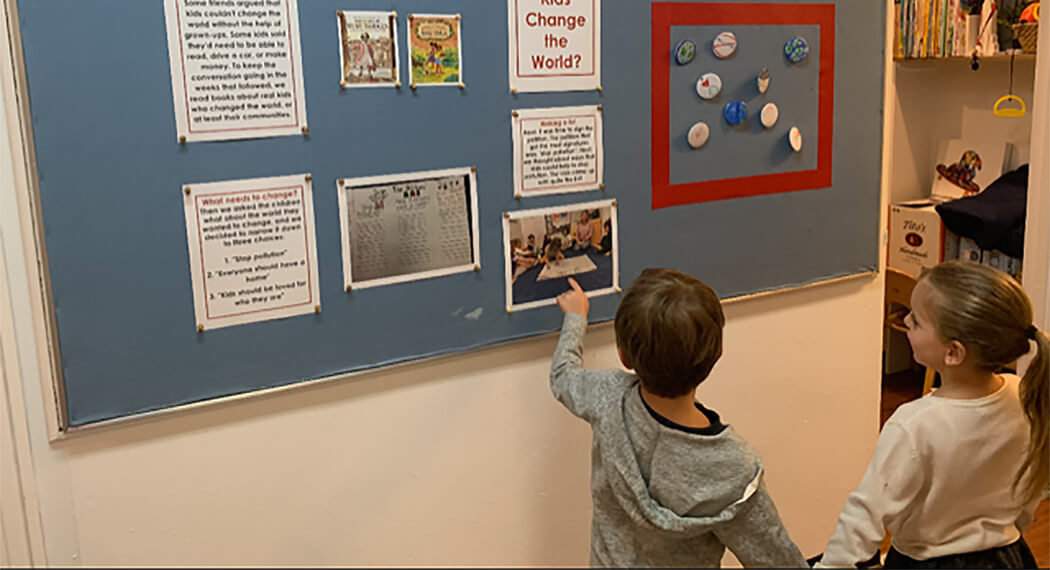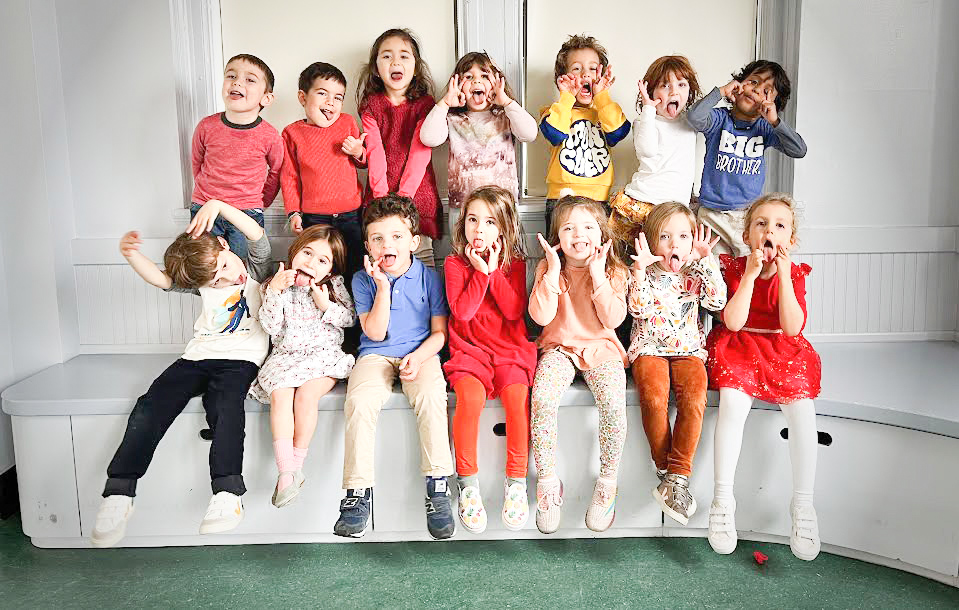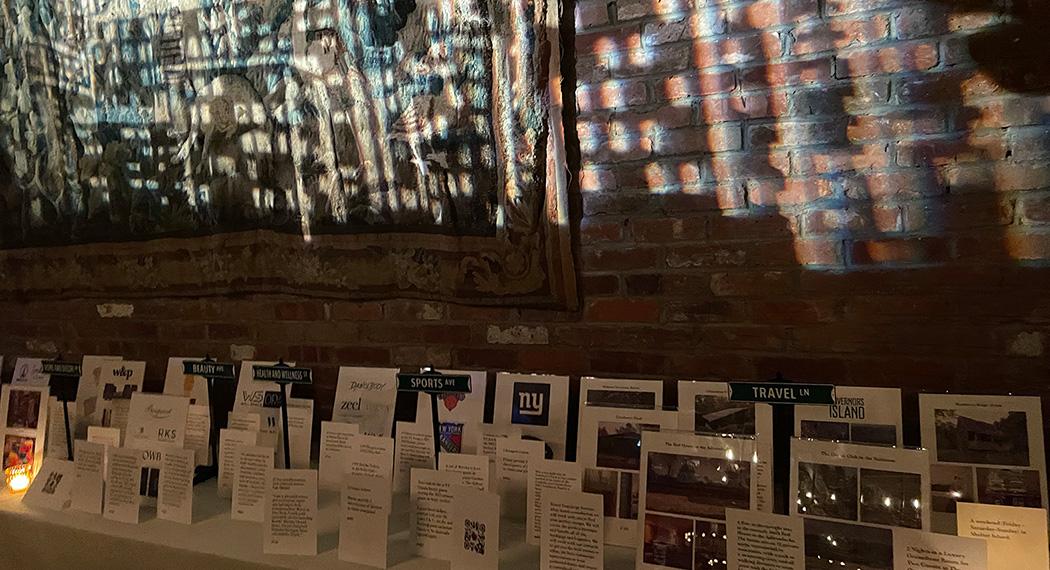Where does ice cream come from, and how was it made? Some of the students’ answers were the same as in the last exploration – “grocery store, bodega, the freezer.” Some students mentioned how cows were on farms. We looked at the book Milk: From Carton to Container by Aliki, and read how milk was collected from cows by farmers and taken to the dairy, where it went through a factory process and was turned into different products before going to stores in the city.
We talked about our favorite flavors of ice cream and our favorite toppings.
Making Ice Cream
What you need:
Ice cream making ball
rock salt
ice
1 pint heavy cream
½ cup sugar
1 tsp vanilla
What you do:
In one half of the ice cream making ball, add rock salt and ice. Close the lid securely.
In the other half of the ice cream making ball, add the heavy cream, sugar, and vanilla. Close the lid securely.
Roll, kick, or otherwise move the ball around for 20 minutes. We went into the gym and on the track to facilitate our movement of the ball. Friends had a variety of different techniques to get the ball in motion.
After 10 minutes, we stopped to open the ball to see what was happening with our ice cream. First, we took a vote – who thought the liquid cream had already turned into solid ice cream, and who thought the cream was still liquid? What did we find? The edges of the metal bowl had frozen cream (ice cream), while the inside of the bowl was more of a slushy creamy mix.
The children were asked why the edges around the bowl had frozen and not the middle – responses included “I don’t know,” ” maybe the edges are colder,” and “maybe the edges are closer to the outside of the ball so they roll more.” Science thinking in action.
Question from students: “Why use rock salt with ice when making ice cream? My building puts salt on the sidewalk to melt the ice.”
It might seem counterintuitive to use rock salt with ice when making ice cream. Salt lowers the melting point of snow and ice, even as it facilitates melting. Rock salt has a larger surface area, so the melting process happens over a more extended period of time while the container is slowly becoming colder. This creates a cooling environment that is highly conducive to creating nice, smooth ice cream.
Everyone enjoyed the ice cream at the end of all of their hard work – even the Yellow Room students who had actively watched their PreK peers rolling the ice cream making balls around the gym and the track and wondered what they were doing.

